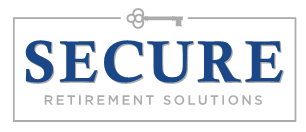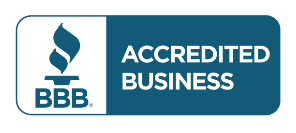How to Find Health Insurance During Open Enrollment in Kearney
Finding health insurance during open enrollment in Kearney means comparing plan types, understanding subsidies, and choosing coverage that balances your healthcare needs with your budget. Open enrollment for Marketplace plans typically runs November 1 through January 15, giving you time to explore options and select the right coverage for your family.
Kearney residents have access to both Marketplace plans and employer-sponsored insurance if they work for qualifying businesses. With 44 years helping Nebraska families understand insurance options, we know which questions matter most when choosing coverage that protects your health and finances.
What Types of Health Insurance Plans Are Available?
The main plan types are HMOs, PPOs, EPOs, and POS plans. HMO plans typically have lower premiums but require you to choose a primary care doctor and get referrals for specialists. PPO plans cost more but let you see any doctor without referrals and offer partial coverage for out-of-network care. EPO plans fall between HMOs and PPOs, with no referrals needed but no out-of-network coverage except emergencies.
Most Kearney residents find that choosing between these plan types depends on whether they have established doctors they want to keep seeing and how often they need specialist care. If you rarely see doctors, a high-deductible plan with lower premiums might work well. If you have ongoing health needs, a plan with higher premiums but lower copays often costs less overall. Learn more about health insurance options in Kearney to understand which plan type fits your situation.
How Do Premium Tax Credits Lower Your Costs?
Premium tax credits help reduce your monthly insurance costs based on your household income and size. If your income falls between 100% and 400% of the federal poverty level, you likely qualify for these subsidies. The credit goes directly to your insurance company, lowering what you pay each month. You can estimate your subsidy using the calculator on HealthCare.gov.
Some Kearney families also qualify for cost-sharing reductions, which lower your deductibles, copays, and out-of-pocket maximums. These apply only to Silver-level plans on the Marketplace. To get cost-sharing reductions, you must choose a Silver plan even if the subsidy would make a Bronze or Gold plan seem more affordable. The actual savings from reduced deductibles often exceed what you'd save with a different metal level.
What Should You Consider When Comparing Deductibles?
Your deductible is what you pay for healthcare before insurance starts covering costs. A $1,500 deductible means you pay the first $1,500 of covered services yourself, then insurance begins paying its share. Plans with lower monthly premiums usually have higher deductibles, while plans with higher premiums offer lower deductibles.
Calculate your expected healthcare use for the year. If you take regular medications, see specialists, or have planned procedures, add up those costs. Compare what you'd pay with different deductible levels, including premiums. Sometimes a plan with a higher premium and lower deductible saves money if you use healthcare frequently. Review available insurance carriers serving Kearney to find plans that match your usage patterns.
Kearney's Healthcare Market and Insurance Access
Kearney benefits from strong local healthcare infrastructure including CHI Health Good Samaritan, numerous primary care clinics, and growing specialty services. Most health insurance plans in our area have built networks around these providers, though network breadth varies significantly between plans. Some plans contract with almost every Kearney provider, while others focus on specific health systems.
The city's role as a regional healthcare hub for central Nebraska means residents have access to care that might require travel in more rural areas. This affects insurance planning because comprehensive networks give you local access to specialists and advanced services. When comparing plans, verify that your preferred doctors and the Good Samaritan hospital are in-network. Our Lincoln office at (402) 421-2936 can help you verify provider networks and estimate your actual costs with different plan options.
When Is the Deadline and What If You Miss It?
The open enrollment period deadline is typically January 15 for coverage starting in the new year. If you enroll by the 15th of any month during open enrollment, your coverage starts the first of the following month. For example, enrolling by December 15 gives you January 1 coverage. Don't wait until the last days of open enrollment because technical issues or questions could prevent timely enrollment.
If you miss open enrollment, you'll need a qualifying life event for a Special Enrollment Period. These include losing other coverage, getting married, having a baby, or moving to a new area. Special Enrollment Periods typically last 60 days from the qualifying event. Since 1981, Secure Retirement Solutions has helped thousands of Nebraska families navigate insurance enrollment deadlines and find coverage that provides both protection and peace of mind without breaking the budget.

